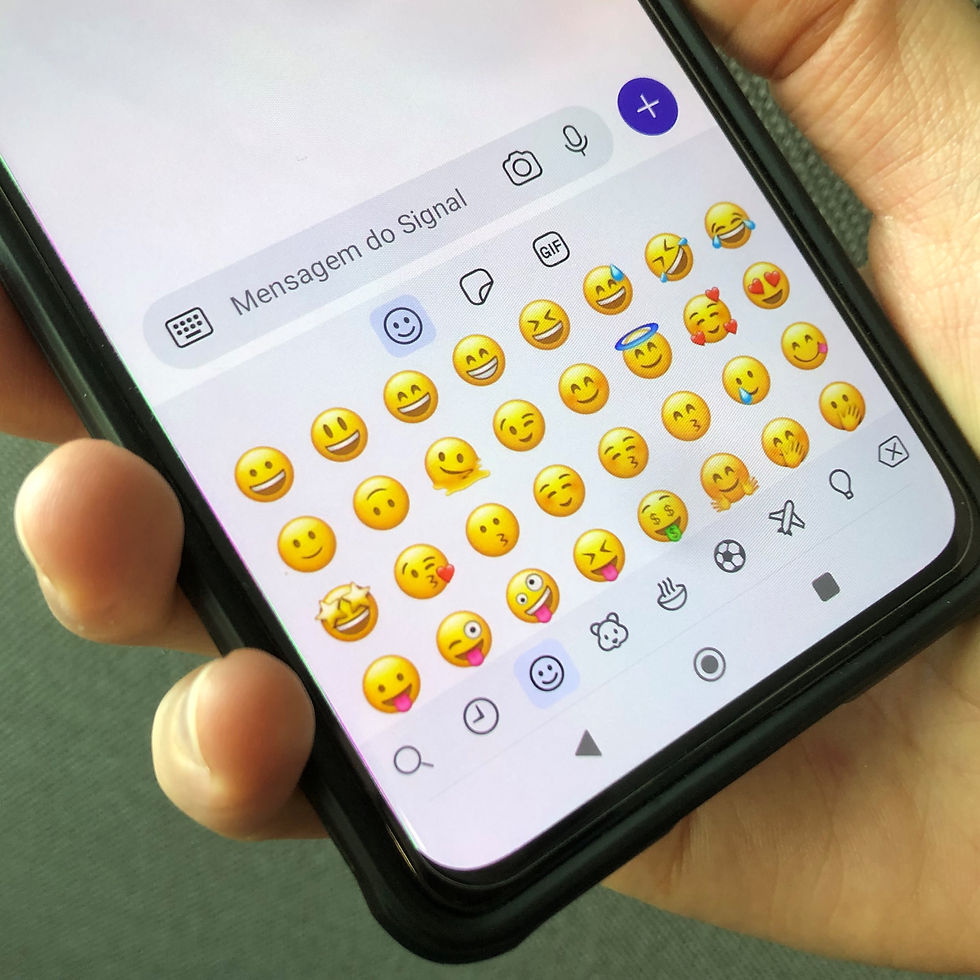Not all emoji (and who uses them) are equal
- Pedro Simão Mendes

- Oct 18, 2022
- 3 min read
Updated: Mar 12
A team from the Center for Psychological Research and Social Intervention (CIS-Iscte) is investigating the impact of the use of emoji - icons used in written messages that can demonstrate emotions, actions (for example, 😀) depending on the proximity of the sender, as well as the perception when this use occurs in contexts of first online interactions or even by brands. Results from these studies published in 2022 show that perceptions of the use of emoji are more favorable among young people and among those who use them frequently, but it seems to vary depending on the context, being more acceptable in close contexts (with friends vs. with bosses) or when they accompany positive (vs. negative) messages. The use of certain emoji also seems to depend on the context and the intention associated with their use: for example, in a first online approach, the use of 😊 is more associated with intentions to start a friendly or romantic relationship, rather than a merely sexual one; in comparison, the use of 😏 tends to better signal intentions to start a sexual interaction.

Bernardo Cavalheiro, a doctoral student at CIS-Iscte whose project focuses precisely on the study of digital communication and the use of emoji, explains the relevance of these studies based on the growing use of emoji that is due to "the also growing use of digital platforms and social networks," but this is still "a form of communication that has been little explored in research."
© 2022 Miguel Andrade
“In fact, we have other studies underway that seek to identify the reasons why emoji may or may not have positive effects on communication. For example, is it a question of giving the impression that people who send them are more 'human' in their communication? Some of our data indicates that this may be one of the reasons."
Regarding brands, Bernardo adds that in one of his studies, "participants perceived brands' use of emojis as quite appropriate in advertisements or in social media comments, but not very appropriate in problematic situations, such as the callback of a defective product, for example. One possible explanation is that we typically use emojis precisely when we communicate on social media, so we even expect others (including brands) to do so as well. On the other hand, when we interact with a brand in order to solve an after-sales problem, for example, the use of emojis may not be as appropriate. This brings us back to the idea of the valence of the situation, as typically these contacts may have a more negative nature, as "we have a problem to solve". Along these lines, other studies from this research team refer to the idea that communication valence is an important cue to take into account in contexts where brands or service providers intend to use emoji.
The research team also points out that the results may not generalize to the entire population, as most participants were young adults with a high level of education. Still, these studies open the way for future research that will help understand new forms of communication that have been little studied, such as the use of emoji.
Members of this research team have been studying aspects of emoji use for a number of years. Indeed, they created the Lisbon Emoji and Emoticon Database (LEED), a database of emojis and emoticons for use in research. In another study, the motives for using emojis were explored, and differences were found according to the age and gender of the participants, highlighting the role of individual factors in this form of technology-mediated communication, issues that Bernardo's recent studies have also investigated.
Text written by Pedro Simão Mendes (Science Communication Manager)







